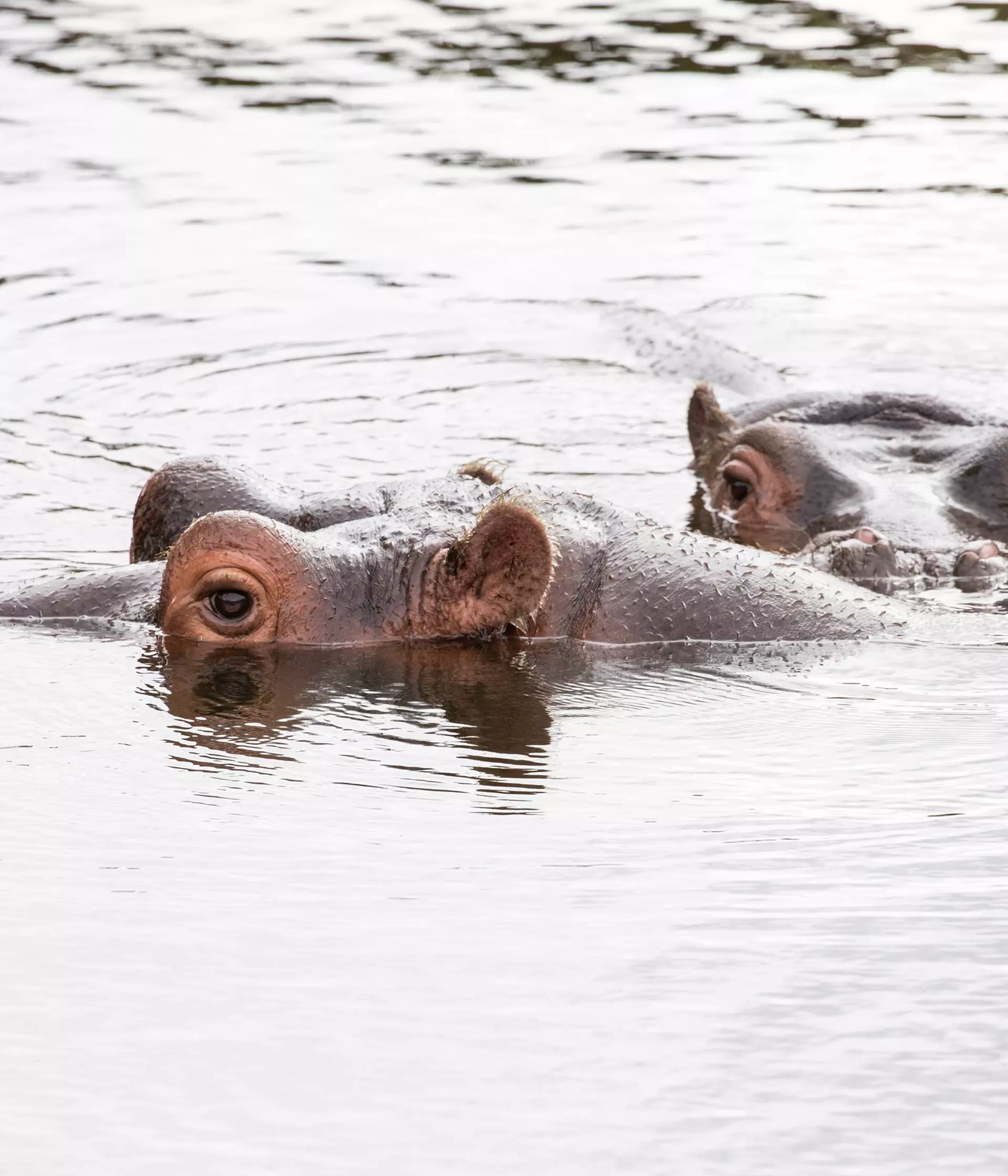Hippo facts
- Hippos have very sensitive skin, which easily becomes dry and cracked. They can actually make their own 'sunscreen', which they secrete through their skin to keep it moist and protect them from the sun's rays.
- The word hippopotamus comes from the Ancient Greek meaning 'river horse'.
- Hippos have very sensitive skin, which easily becomes dry and cracked. They can actually make their own 'sunscreen', which they secrete through their skin to keep it moist and protect them from the sun's rays.
- Common hippos lives in groups of 10-30 in rivers and lakes.
- Common hippos nostrils on top to stick out of river for easy breathing
Our common hippo family
Hodor who was born in July 2017 and named after the loveable gentle giant from Game of Thrones. He loves to chase any ducks who are brave enough to enter his paddock. But don't worry, he's never quick enough to catch them. Hodor is a lot older now, but as a new born calf he weighed approximately 30kg at birth – about the same as an adult Labrador – and is dwarfed by his mother, Lola, who tips the scales at a mighty 1.5 tonnes.
Our hippo habitat has reed bed filtration which acts as a natural eco friendly way to keep the water pristine.
Common hippo threats
The biggest threats to common hippos are habitat loss caused by agriculture and illegal hunting for meat and the ivory in their canine teeth. This ivory is often found alongside elephant ivory during seizures.
